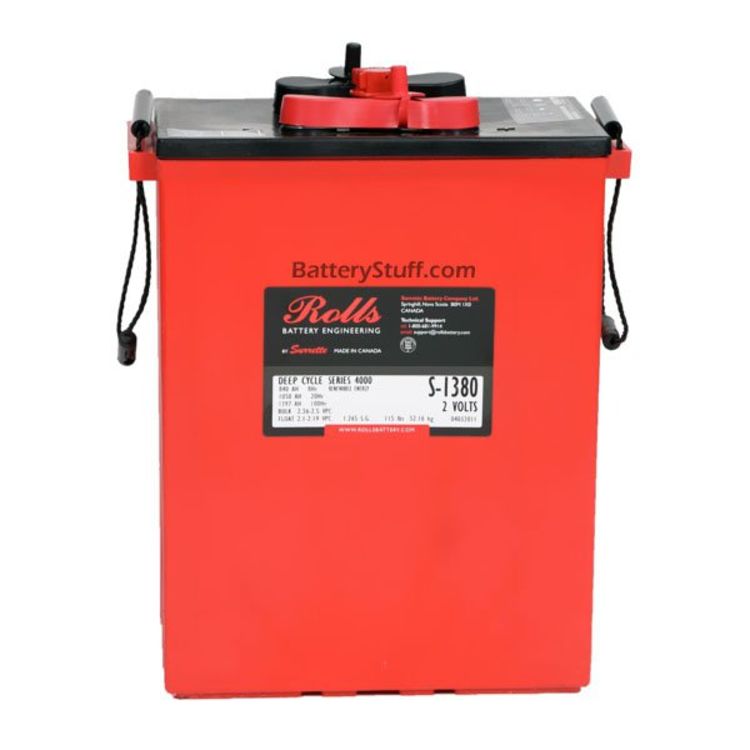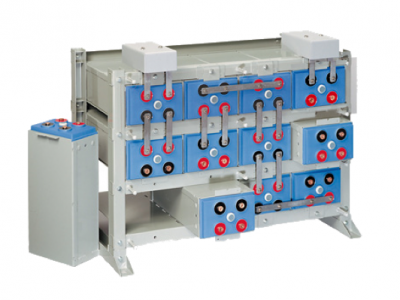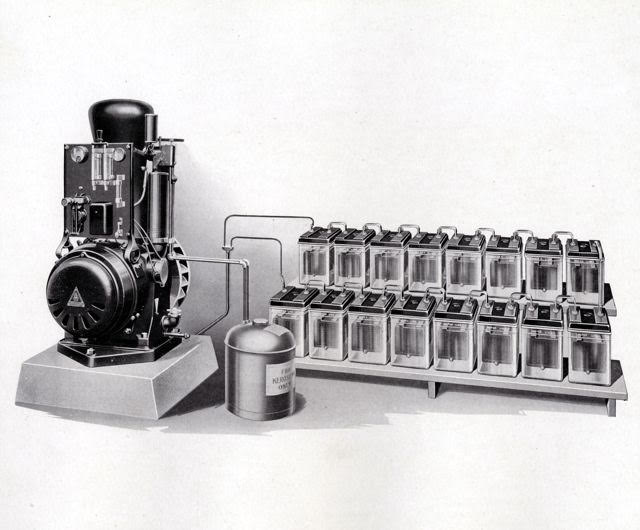Will needs a big solar power system for his big house. We figure he has the perfect slab of roof for installing enough solar modules. Now, since he wants an off-grid system, we are going to think about a battery. A really BIG battery.
No, I have not forgotten about Will and his new solar power system. It’s just, well, holiday season, firewood cutting season and working on my own system season. I have been thinking about it, though, and I’m thinking I’d hate to see Will completely leave a perfectly good grid. But is it a perfectly good grid?
Lots of places in Texas, where Will lives, give grid-tie folks net metering and some that don’t at least don’t try to punish you for having solar. If you have a good power company you can put together a system that will take care of most or all of your power consumption and you’ll still have the power company as a backup. Maintaining the connection to the power company can cost a bit, but it could save you a good bit of expense in your power system, like on the size of your battery bank.
Warning: Your power company might change the deal at any time. It happens all the time. I just saw where one power company figured the value of your grid tie solar power at nearly 8 cents, yet they decided to pay 2 cents for it and charge you a bunch if you buy it back. They might also tack on an extra $50 per month or more just for the grid tie connection. Grid-tie, traditionally did not give you power backup if, say, the power company shut the power off for a week to prevent forest fires. We have ways around all of that, now. We can interact with the grid instead of intertie. More on that later.
Will’s motivation is to save on expenses when he retires. Smart move. What I am going to suggest is a path where he can keep the grid for a backup and eliminate most of the power bill OR cut the cord. It is the same equipment and following this path, except you have more or less battery expense. Your solar panels will provide all of the house’s power, if all the calculations were right, and you can cut the cord to the power company when you are confident about the system.
Let’s start out, though, just planning our battery size for going off grid. I find that being able to go 4 cloudy days is a pretty good reserve. On a cloudy day, you might only get 10% out of your solar modules. If it is cold then the batteries might get a little sluggish, too.
I came upon the number 4 because that is how long the grid was down after a hurricane when I was building my house. Only basic circuits were included in my battery backup system and that worked fine until the hurricane with a 5 week outage! I do sometimes see 5 or even 6 dreary days in a row, but that is rare. Think about how many days of reserve you need for your location. For our purposes, here, we’ll calculate for 4 days.
Back in Part 2, we estimated that Will uses around 3000kilowatt-hours (kwh) a month. He’s going to need a 48 volt system, for sure. There is equipment with higher voltages, but it is rare. 48 volts will keep the amperage at modest levels.
OK, 3000kwh per month divided by 30 days in a month gives us 100kwh of power per day, or 400kwh for our 4 day reserve. Divide 400,000 watt-hours (remember, those were KILO watts) by 48v and you get 8333.33 amp hours of battery. See that huge battery at the top of the page? I think that one is 3000 ah. If you haven’t had an OMG moment, yet, consider it really hurts a battery’s lifespan if you drain it down below 50%. So we double it and round it up to 17,000 ah. OMG!
Don’t panic, yet. That 3000ah battery up top belongs to a fellow named Daryl. Daryl has a chain hoist and a gantry to get it tucked into the house and a forklift to move it outside. Daryl is kind of an exception with the equipment he has around the house.

You can buy 2 volt cells with lots of amp-hours that one person with a hand truck can move around. There are also modular racking systems. It is going to take some space and I’m not talking along the back wall of a typical garage, unless you leave the car outside. No, this is not one of those dinky little Tesla Powerwall toys.

There are many choices in battery types. We hear a lot about Lithium these days. They are probably the most expensive option, but they are a lot lighter and you can discharge them deeper without hurting them, so you don’t have to have quite such a large battery. On the other hand, they require a battery management system because running the battery down too far JUST ONCE can ruin it. The best thing is they are sealed and require no maintenance.
Pocket plate Nickel Cadmium, or NiCad, is another expensive option, but these batteries are hard to break. Unlike the NiCads we used to see in power tools, these don’t lose capacity owing to “memory effect.”
Nickel-Iron Edison batteries were so good they quit making them! There are 100 year old batteries still working. The only maintenance is to add water and maybe wash them out every few decades. You can run them completely down and ignore them for years and they’ll come right back to life. They were still made in eastern Europe and China and are now back in USA production. I have been told they have a higher self-discharge rate than other batteries, but have never seen it in a spec sheet. This is as close as you’ll probably get to a forever battery. Pricing is along the lines of Lithium.
Lead-acid batteries are most common. They come in both sealed and open varieties. Flooded, or open, batteries are fairly tolerant of abuse, but require regular service in the form of adding distilled water and neutralizing acid mist. They need good ventilation as they produce hydrogen gas. They come in relatively small and cheap units in the form of golf car batteries or large and rugged industrial cells, as you see in the photo of the red Rolls battery, above. These batteries have thick plates and large electrolyte reservoirs for long life.

Sealed batteries do not normally require any service and can have a very long life. They can be damaged by charging them too hard, though. Make sure to use the appropriate setting on the charge controller.
Regardless of battery type, in a system this large it is possible to have a charge rate that can damage the battery bank. If multiple charge controllers are needed, it may be best to use a controller family that can be linked together to coordinate the charging. I don’t have that with my 4 charge controllers, three different models, but can set the parameters differently on each one to allow for a more modest charge rate.
Here is another consideration of going off grid. You have to have a certain amount of kilowatts coming in to meet your living requirements, but you have to have a battery that can handle all of those amps and watts coming in.
Let’s say we have panels that can put out 200 amps and one string of the Sun230 batteries. 200 amps into a 230 amp battery is charging at almost a charge rate of C1. They are great batteries in their size class, but at C1, they’d melt. Quickly. These batteries are probably best charged at C10 or C20, or a whole lot less than 200 amps. 8 or 10 strings of these batteries would take the charge just fine, but you really should limit the number of batteries strings (groups) because minute differences can cause them to fight each other.
200 amps going into Daryl’s 3000ah Bull Dog battery would be fine. Will’s system is going to make a bit more than 200 amps, so there we are back to another reason to have a humongous battery.
But maybe it doesn’t have to be quite that big. If you keep your grid connection and use a hybrid inverter, you can set it to provide the power when the batteries have it available and automatically switch over to grid power when they don’t. With a relatively small battery, you could run around the clock in good weather, with low a/c demand and pull from the grid if you have one of those long dreary periods. Will has another ace in the hole I’ve not mentioned. He has a natural gas whole-house generator, so the generator could take up the slack in cloudy weather.
Since he has the generator for backup power, there is a way of going grid-interactive without spending as much on the system. That involves the use of Zero-Export Grid Tie. I don’t think that’s the best name for it, but that’s what we have to work with for now. This lets your solar panels reduce your grid power consumption without incurring and Grid Intertie fees that would negate the savings. These can be equipped with batteries, too, to extend the savings into the night. I just commissioned such a setup this morning on the little bit of my house that is on grid, so I can’t yet address what kind of savings you can expect there.
Some lifestyle modification might help on the size of the batteries and other system components. Can you operate the pool pump only during the day with a timer without it turning into a swamp? Better yet, could you just fill in the hole? Snapdragons and Dianthus would be lovely this time of year. Pansies, too, if not exposed to rain and sleet. Will probably likes his pool, but a lot of people do fill them in! It is probably where about $100 of his power is going, too.
Also on the pool, if you have a heater and you have natural gas, I hope that is what you are using. Better yet, solar thermal heat. Super cheap and efficient!
Anyway, I have rambled on a bit long, but you should be able to find some things to consider in there, too.
We can talk about charge controllers to charge that big battery next time.–Neal
